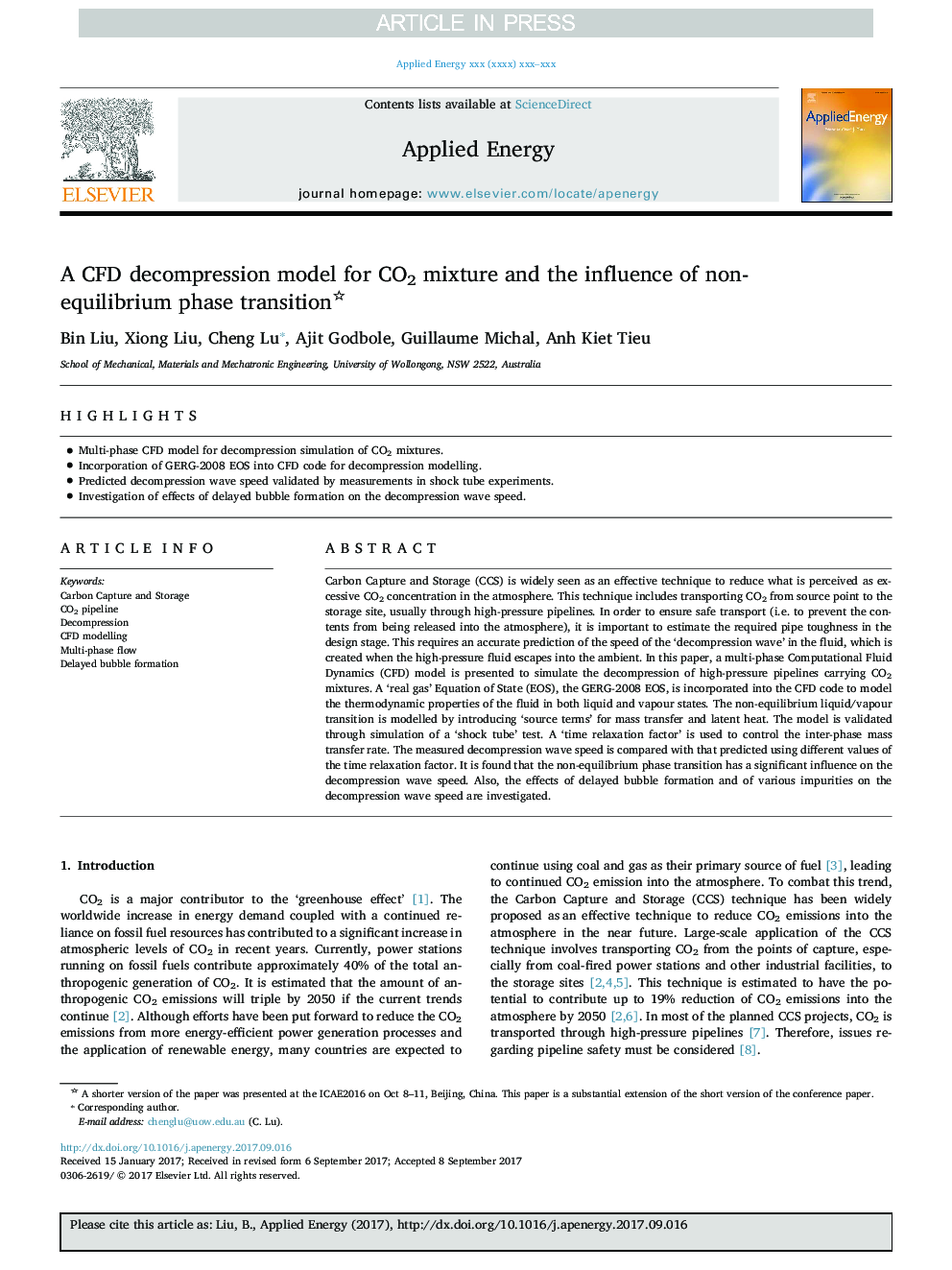| Article ID | Journal | Published Year | Pages | File Type |
|---|---|---|---|---|
| 8953471 | Applied Energy | 2018 | 9 Pages |
Abstract
Carbon Capture and Storage (CCS) is widely seen as an effective technique to reduce what is perceived as excessive CO2 concentration in the atmosphere. This technique includes transporting CO2 from source point to the storage site, usually through high-pressure pipelines. In order to ensure safe transport (i.e. to prevent the contents from being released into the atmosphere), it is important to estimate the required pipe toughness in the design stage. This requires an accurate prediction of the speed of the 'decompression wave' in the fluid, which is created when the high-pressure fluid escapes into the ambient. In this paper, a multi-phase Computational Fluid Dynamics (CFD) model is presented to simulate the decompression of high-pressure pipelines carrying CO2 mixtures. A 'real gas' Equation of State (EOS), the GERG-2008 EOS, is incorporated into the CFD code to model the thermodynamic properties of the fluid in both liquid and vapour states. The non-equilibrium liquid/vapour transition is modelled by introducing 'source terms' for mass transfer and latent heat. The model is validated through simulation of a 'shock tube' test. A 'time relaxation factor' is used to control the inter-phase mass transfer rate. The measured decompression wave speed is compared with that predicted using different values of the time relaxation factor. It is found that the non-equilibrium phase transition has a significant influence on the decompression wave speed. Also, the effects of delayed bubble formation and of various impurities on the decompression wave speed are investigated.
Related Topics
Physical Sciences and Engineering
Energy
Energy Engineering and Power Technology
Authors
Bin Liu, Xiong Liu, Cheng Lu, Ajit Godbole, Guillaume Michal, Anh Kiet Tieu,
